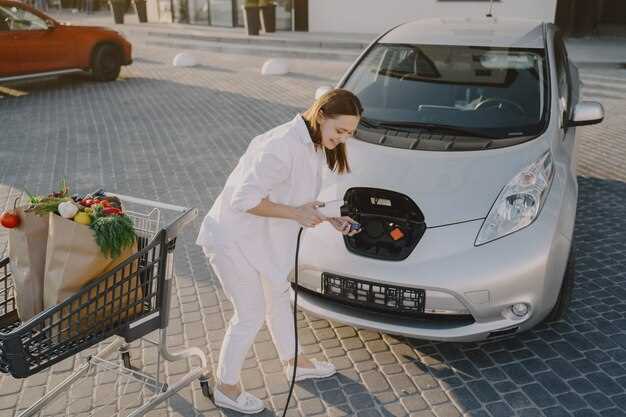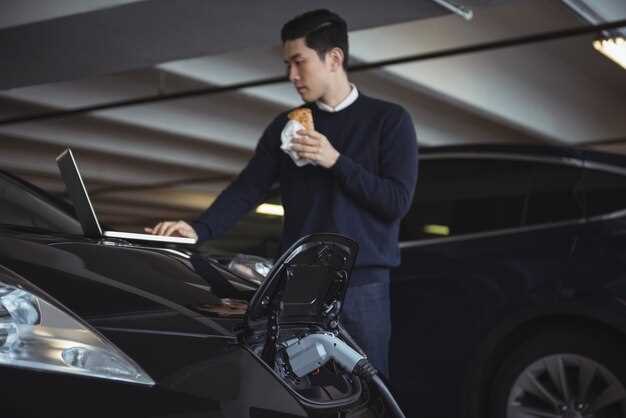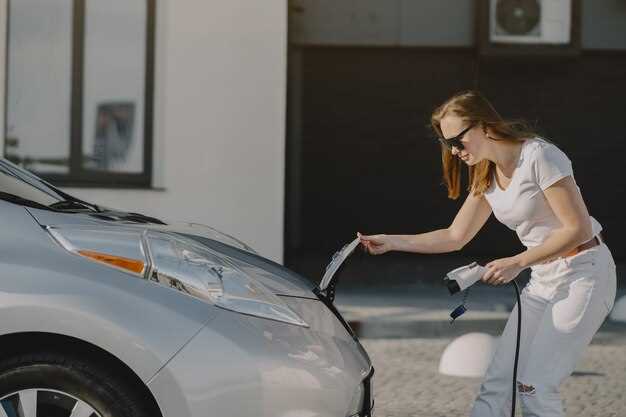
The rapid evolution of electric vehicles (EVs), particularly in the luxury segment, has ushered in a new era of environmentally friendly transportation. As consumers become more discerning about quality and performance, understanding the lifespan and performance metrics of luxury EV batteries has become essential. With advancements in technology, manufacturers are continually striving to enhance battery efficiency, longevity, and overall reliability, ensuring that these premium vehicles meet and exceed consumer expectations.
Luxury EVs are often equipped with cutting-edge battery technology designed to deliver superior performance. Factors such as energy density, thermal management, and cell chemistry play a pivotal role in determining both battery lifespan and driving experience. As we explore the intricacies of what influences battery longevity, we will also consider how innovative technologies contribute to optimizing performance across various driving conditions.
In this article, we will provide an in-depth analysis of the factors affecting the lifespan of luxury EV batteries, offering insights into maintenance practices that can prolong their efficiency. Additionally, we will examine real-world performance data, helping potential buyers understand what to expect when investing in a luxury electric vehicle. With this knowledge, consumers can make informed decisions and fully enjoy the benefits of transitioning to electric mobility.
Factors Influencing Battery Lifespan in High-End Electric Vehicles

The lifespan of batteries in high-end electric vehicles (EVs) is determined by several critical factors that interplay to affect overall durability and performance. Understanding these elements is essential for manufacturers and consumers alike, as they can significantly influence the total cost of ownership and vehicle reliability.
1. Battery Chemistry: The type of battery chemistry used plays a vital role in lifespan. Lithium-ion batteries dominate the high-end EV market because of their energy density and performance attributes. However, variations in formulations, such as the inclusion of nickel, manganese, or cobalt, can affect degradation rates and longevity.
2. Temperature Management: Extreme temperatures can severely impact battery lifespan. High-end EVs often feature advanced thermal management systems that maintain optimal operating temperatures. Consistently high heat can accelerate chemical reactions within the battery, leading to faster degradation. Conversely, low temperatures may affect charging efficiency and range.
3. Charging Practices: How and when a battery is charged significantly affects its lifecycle. Frequent fast charging can generate considerable heat, potentially shortening its lifespan. Many luxury EVs come equipped with software that manages charging patterns to ensure the battery is not constantly charged to 100% or depleted to nearly empty, thus enhancing longevity.
4. Depth of Discharge (DoD): The extent to which a battery is discharged before being recharged is crucial. Shallow cycles (partial discharges) tend to be healthier for battery longevity compared to deep discharge cycles. High-end EV manufacturers often recommend maintaining battery levels between specific percentages to optimize lifespan.
5. Usage Patterns: The way a vehicle is driven can also influence battery life. Aggressive acceleration, frequent high-speed driving, and heavy loads can put additional strain on the battery. Luxury EVs often integrate performance modes that allow users to manage these factors to prolong battery health.
6. Battery Management Systems (BMS): Advanced BMS are critical in high-end EVs, as they monitor and control various parameters, including voltage, temperature, and state of charge. These systems help optimize performance and prolong lifespan by preventing conditions that may lead to battery damage.
7. Environmental Factors: External conditions, such as humidity and altitude, can also impact battery performance. High-end EVs are often tested under various environmental conditions to ensure that their batteries can withstand diverse climates and continue to perform optimally.
By understanding these factors, potential buyers and current owners can make informed decisions regarding maintenance and usage habits, ultimately leading to longer battery life and better performance in their luxury electric vehicles.
Real-World Performance Metrics for Luxury EV Batteries

Luxury electric vehicles (EVs) have been at the forefront of automotive innovation, and their battery performance is a critical aspect that influences their overall appeal. In real-world conditions, several performance metrics come into play, allowing consumers to evaluate the efficacy of these advanced power sources.
The first key metric is the battery lifespan, which is often expressed in terms of charging cycles. Most luxury EV batteries can withstand 1,000 to 2,000 full charge cycles before noticeable degradation occurs. This translates to approximately 300,000 to 500,000 kilometers of driven distance, depending on driving habits and environmental conditions.
Another important performance metric is energy density, which determines how much energy a battery can store relative to its weight. Luxury EV batteries generally feature higher energy densities, ranging from 150 to 250 Wh/kg. This translates to longer ranges, with many models offering over 300 miles (approximately 480 kilometers) of range on a single charge.
Charging speed is also a crucial metric for luxury EVs. Advanced battery systems can support fast-charging technology, allowing drivers to achieve an 80% charge in as little as 30 minutes, even with high-capacity batteries. This rapid charging capability enhances convenience for users who are often on the go.
Temperature management plays a significant role in battery performance. Luxury EVs frequently incorporate sophisticated thermal management systems to maintain optimal operating temperatures. This helps mitigate performance drops in extreme weather, ensuring consistent performance year-round.
Socio-environmental metrics also have become increasingly relevant. Many luxury EV brands are focusing on sustainability, not only in vehicle design but also in battery production and recycling processes. As a result, some models now boast a lower carbon footprint across their lifecycle, contributing to the appeal for environmentally-conscious consumers.
Finally, real-world performance metrics include user feedback on battery reliability and warranty terms. Many luxury EV manufacturers offer warranties ranging from 8 to 10 years for their battery packs, providing a safety net for consumers against potential issues. Customer satisfaction regarding battery performance often reflects positive ownership experiences and enhances brand loyalty.
In summary, real-world performance metrics for luxury EV batteries encompass lifespan, energy density, charging speed, thermal management, sustainability efforts, and consumer reliability. These factors play a pivotal role in determining the overall value proposition for buyers in an increasingly competitive electric vehicle market.
Maintenance Tips to Extend the Life of Your Luxury EV Battery
To maximize the lifespan of your luxury EV battery, it’s crucial to adopt specific maintenance practices. Begin by regularly monitoring battery charge levels. Aim to keep your battery charge between 20% and 80%, as frequent full discharges and charges can accelerate degradation.
Temperature control plays a vital role in battery health. Avoid exposing your EV to extreme temperatures, both hot and cold. Whenever possible, park in shaded areas during summer and use a garage or covered space in winter to maintain a stable environment for your vehicle.
Incorporating a balanced charging routine is beneficial. Utilize slow charging methods when convenient, as rapid charging generates more heat and may impact battery integrity over time. If your EV supports it, enable features like preconditioning to optimize battery temperature before charging or driving.
Regular software updates are essential for maintaining battery efficiency. Manufacturers often release updates that enhance battery management systems, improving performance and longevity. Ensure your vehicle’s software is always up-to-date for optimal functioning.
Consider using regenerative braking whenever possible. This feature not only enhances driving efficiency but also recaptures energy that would otherwise be lost, helping to extend the battery’s life.
Lastly, seek professional maintenance inspections at recommended intervals. Trained technicians can identify early signs of wear or potential issues that could impact battery performance, allowing for timely intervention and repairs.

